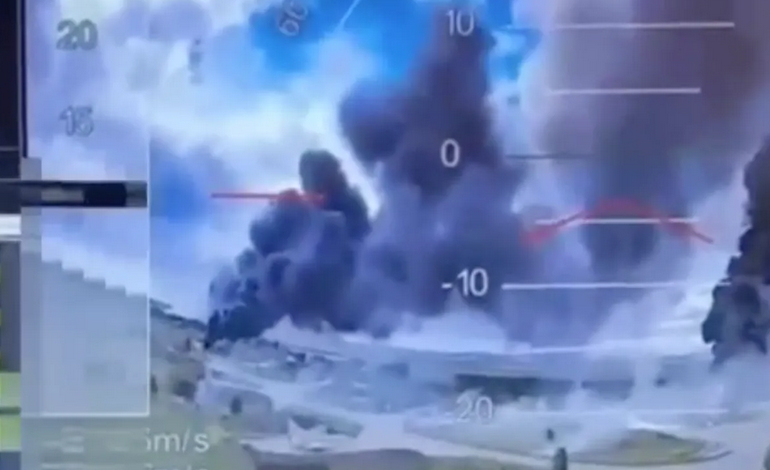The first satellite images showing the consequences of the major Ukrainian drone attack on the Russian Belaia airbase in the Irkutsk region have appeared on social media on Monday, revealing significant damage to Moscow’s strategic bomber fleet.
Sunday’s attack was part of a coordinated operation by the Ukrainian Security Service (SBU) targeting several Russian military airfields.
The Belaia airbase, located over 4,000 kilometers from Ukraine, was one of the most distant targets. Other attacked airbases were Olenia (Murmansk region), Diaghilev (Ryazan region), and Ivanovo (Ivanovo region).
Photos depicting the Belaia base, taken by the American aerospace company Umbra Space, appear to confirm the destruction of at least three Tu-95MS strategic bombers and one Tu-22M3 aircraft. Additionally, one Tu-95MS is visibly damaged.
Another image shows two destroyed Tu-22M3 bombers, as reported by Kiev Independent.
According to satellite images taken on May 31, the Belaia airfield housed 52 strategic aviation aircraft (six Tu-95MS, 39 Tu-22M3, and seven Tu-160) and 30 MiG-31 fighter jets one day before the attack, as shown by the AviVector OSINT project.
What Happened at Olenia Base
Initial information about the consequences of the attack on another Russian base, Olenia, has also emerged, although details vary from one source to another.
Based on published video recordings, five aircraft caught fire at this airfield in the Murmansk region - two Tu-95MS and one An-12 military transport were destroyed, while two Tu-95MS were damaged, as reported by OSINT analyst MarcinRogowsk14, cited by Meduza.
Another analyst, Intelschizo, suggested that four Tu-95s and an An-22 were destroyed at the airfield, with another Tu-95 likely destroyed. OSINT analyst Moklasen believes that three to four strategic bombers were destroyed at the Olenia airfield.
According to AviVector, satellite images show that as of May 26, there were 11 Tu-95MS, 40 Tu-22M3, and five An-12 aircraft at the Olenia airfield.
There are no video recordings or satellite images from other Russian airfields that were targeted by Ukrainian drones, as stated by the Latvian publication.
A Huge Defeat for the Russian Colossus
The massive drone attack coordinated by the SBU hit 41 Russian aircraft at four different airfields.
Andrii Kovalenko, the head of the Disinformation Combat Center and an official at the National Security and Defense Council of Ukraine, stated that at least 13 Russian aircraft were destroyed in the attack, with several others damaged.
According to an SBU source consulted by Kiev Independent, the operation - codenamed "Spider Web" - involved the illegal introduction of first-person view (FPV) drones deep into Russian territory. The drones were concealed in wooden mobile truck cabins and remotely launched at the right moment to target the bombers involved in missile attacks on Ukrainian cities.
The SBU announced that the strikes affected 34% of Russia's cruise missile bomber fleet and caused approximately $7 billion in damages.
The Russian Ministry of Defense later confirmed a "terrorist attack" on the four airbases, stating that "several aircraft caught fire."
- Ukraine's Large-Scale Attack in Russia: Four Airbases and 41 Aircraft Hit. Operation Prepared for a Year and a Half
- Ukraine's Attack on Russian Air Bases: 18 Months, a Strategic Message, and a Major Blow to Moscow
The scale and coverage of the operation, carried out by low-cost FPV drones, highlight Ukraine's growing long-range strike capabilities, particularly against aircraft that have long been launching missile barrages from deep within Russian territory, as noted by the Ukrainian publication.
SBU Chief Vasil Maliuk and President Volodymyr Zelenskyy oversaw the long-planned operation.
"What is most interesting, and this can now be stated publicly, is that the 'office' of our operation on Russian territory was located right next to the FSB headquarters in one of their regions. In total, 117 drones with a corresponding number of drone operators were involved in the operation," Zelenskyy said in a social media post.

